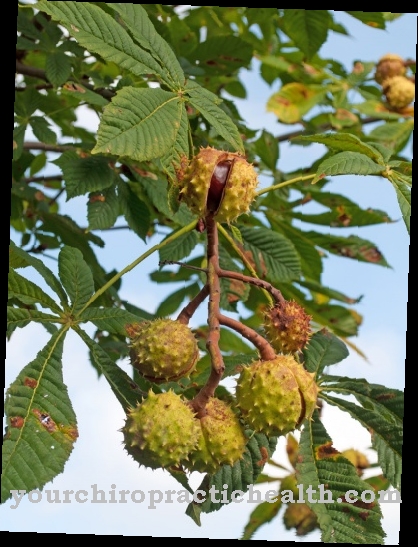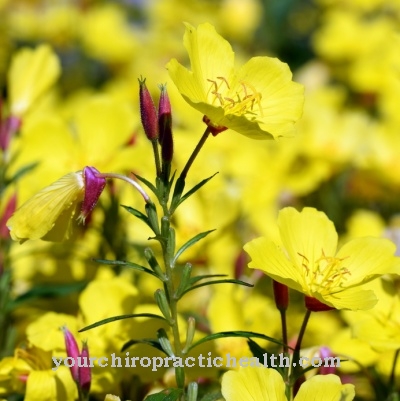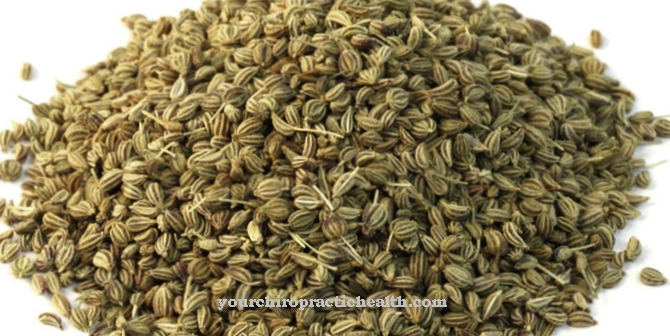Of the Meadow clover with its spherical flowers is widespread in local meadows and has been used as a medicinal plant for various ailments since the early Middle Ages. Its high content of hormone-like plant substances is particularly important, making it an interesting gentle and natural alternative to conventional hormone replacement therapy. Menopausal women particularly benefit from its estrogen-like effects.
Occurrence and cultivation of meadow clover

The meadow clover reaches heights of ten to thirty centimeters and has tapering, oval or elliptical leaves with a white mark in the middle. The up to eighteen millimeters large, delicately scented flowers are from dark pink to red in color and appear from early summer. The wild meadow clover thrives in Europe on dry fodder and fat meadows, in forest clearings, on roadsides, in fields and in semi-arid grasslands.
As a natural remedy and protein-rich forage plant for livestock, the meadow clover is cultivated on a large scale in China and many countries in Eastern Europe. It thrives best in nutrient-rich and calcareous soils with a high proportion of loam and clay and can be found in the flatlands as well as in mountainous areas of up to 2600 meters.
Effect & application
In addition to waxes, fats, essential oils, trace elements and tannins, the meadow clover contains high amounts of isoflavonoids, which are important for human health and can also be found in soy in a similar concentration. These secondary plant substances are also known as phytoestrogens and are very similar in structure and effect to the female hormone estrogen.
That is why the flowers and leaves of the meadow clover are used in the manufacture of various preparations that make it easier for women to change hormones during menopause. Meadow clover contains biochanin, daidezin, genistein and formononetin, four of the five isoflavonoids. These are present in dissolved form in the cells of the plant and are used in meadow clover extracts. For some years now, preparations based on meadow clover have become increasingly important as a herbal alternative to hormone replacement therapy.
Red clover extract can be taken in the form of capsules and liquid supplements that are specially made for menopausal women. Additional ingredients such as vitamins, minerals and natural oils in such drugs support the immune system and metabolism and make a valuable contribution to the health of skin, hair and nails. In addition to the plant hormone phytoestrogen, the strong anti-inflammatory and blood-cleaning properties of red clover are also important for human health.
Tea infusions are used internally and prepared from the freshly collected or dried flower heads and leaves. These are poured over with boiling water and should steep for about ten minutes. After straining, the tea is to be sipped in sips, three cups per day being given as the maximum amount. Use for at least four to six weeks is recommended for optimal effect. The dried leaves can also be added to herbal tea blends to develop their gentle hormone-stabilizing effect.
Alternatively, a tincture can be made by pouring alcohol over the clover blossoms and placing them in a screw-top jar. After several weeks, the mixture can be strained. It is suitable for internal use, but can also be applied neat or in poultices to the skin and used as a bath additive.
Importance for health, treatment & prevention
The estrogen-like effect of isoflavonoids protects women and men from various ailments and diseases that are related to a disturbed or changed hormone balance. The use of preparations based on meadow clover has been shown to reduce the risk of developing breast, ovarian and uterine cancer as well as prostate tumors.
If the hormone production in men and women declines with increasing age, the intake of medicinal substances based on meadow clover or the consumption of tea can be used as a complementary therapy. Typical menopausal symptoms such as sweats, hot flashes and psychological symptoms such as imbalance, nervousness, sleep disorders and depressive moods can be effectively alleviated by using meadow clover.
The positive effect on the hormonal balance not only benefits middle-aged women and men, but also young people, because estrogen plays an important role in health at all ages. A deficiency in this hormone can lead to poor concentration, reduced blood flow to the internal organs and high cholesterol levels, and negatively affect mood, sleep and lipid metabolism.
Red clover extract or tea therefore lowers the risk of arteriosclerosis, obesity and mental disorders. Numerous studies also prove a preventive effect of the meadow clover against osteoporosis, as the phytoestrogens maintain the bone density.
In naturopathy, red clover has been used for centuries against inflammation as well as against chronic skin diseases, flu-like infections and ulcers. As a tea infusion or tincture used internally, the meadow clover unfolds its anti-inflammatory effect against rheumatism, gout and other joint diseases. Thanks to its antioxidant properties, it protects the cells against free radicals and thereby lowers the risk of tumor diseases.
Intestinal inflammation, constipation, and diarrhea can also be relieved by using red clover tea. Many healing therapists use clover tinctures successfully against skin diseases such as psoriasis, eczema or acne. In homeopathy, clover extracts are used against infections of the parotid gland and diseases of the upper respiratory tract.



























